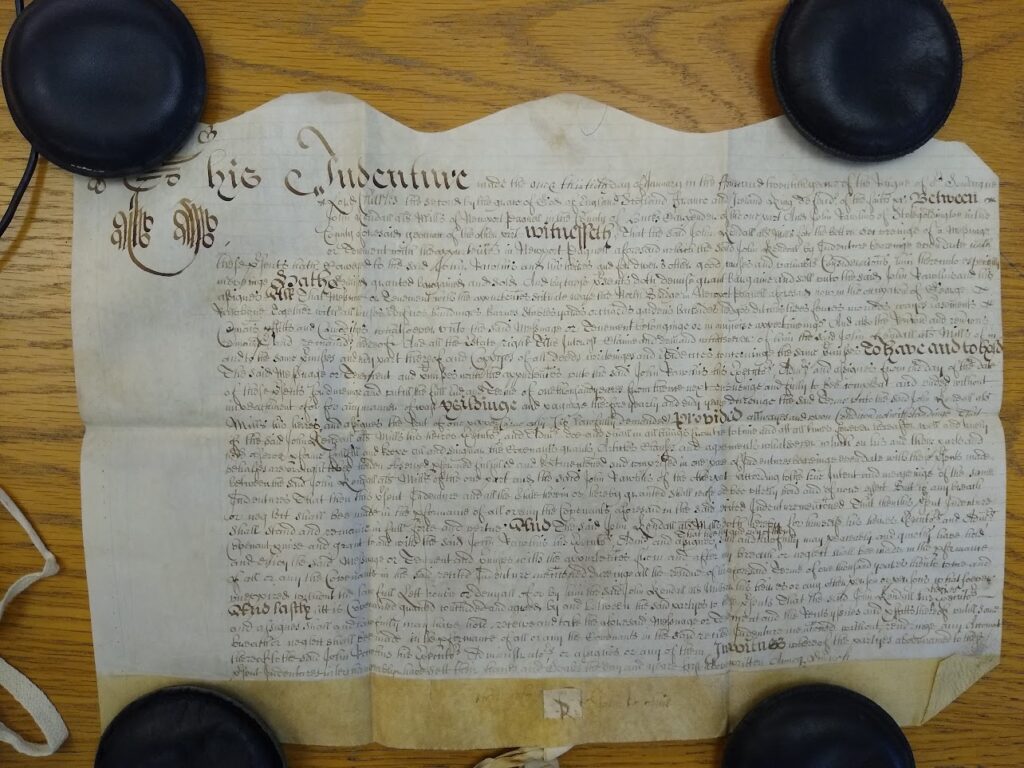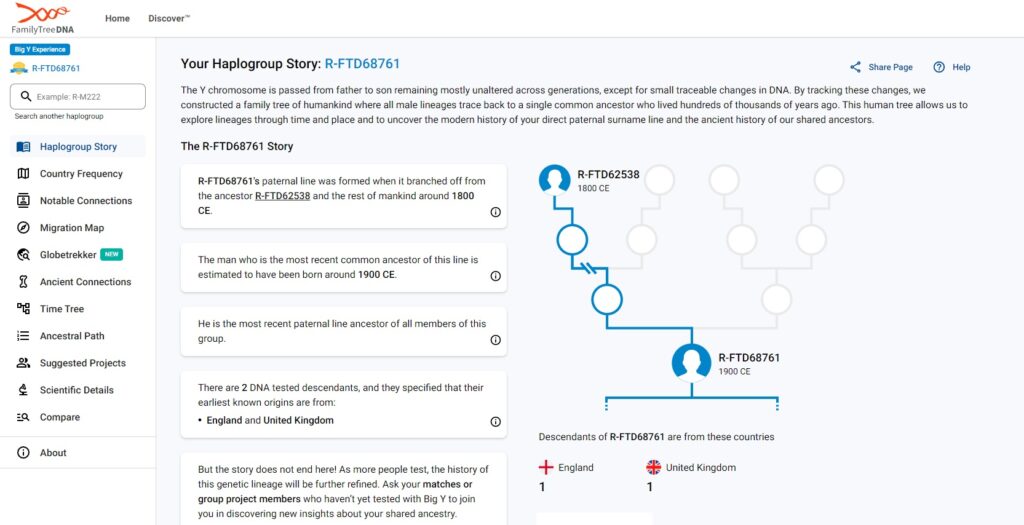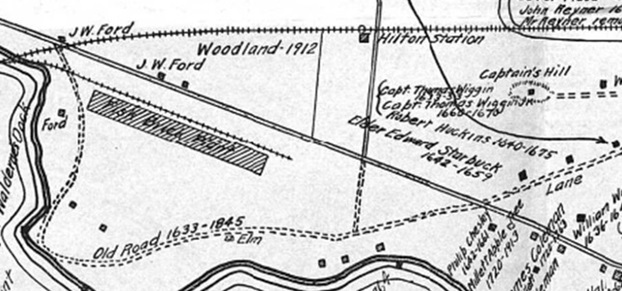
Deed
DC13/3/1/1 (1669-1689) Property on North Bridge – the Ship & Cottages. In 1673, Kendall alias Mills to John Rawlins, messuage in occupation of George Rawbone. Other later deeds in the bundle concern Walter Beaty (Scotch chapman).
Transcription by Keri-Lynn
This Indenture made the one & thirtieth day of January in the Four and twentieth yeare of the Raigne of o[ur] Sovaigne (sovereign) Lord Charles the second by the grace of God of England Scotland France and Ireland King defender of the faith &c. Between John Kendall als Mills of Newport Pagnell in the County of Bucks Carpender of the one part And John Rawlins of Stokegoldington in the County aforesaid yeoman of the other part Witnesseth that the said John Kendall als Mills for the better secureinge of a Messuage or Tenement with the appurtences in Newport Pagnell aforesaid which the said John Kendall by Indenture bearinge even date with these presents hath Conveyed to the said John Rawlins and his heires and for divers other good causes and valuable Considerations him thereunto especially moveinge Hathe Devised granted bargained and Sold And by these presents doth devise grant Bargaine and sell unto the said John Rawlins and his assignes All That messuage or Tenement with the appurtences scituate neare the North Bridge in Newport Pagnell aforesaid now in the occupacon of George Rawbone Together with all houses edifices buildings barnes Stables yards orchards gardens backsides hedges ditches trees fences mounds wayes Easements Commons proffitts and Comodityes whatsoever unto the said Messuage or Tenement belonginge or in anywise appertaineinge And also the reversion and reversions remainder and remainders thereof And all the Estate right Title Interest Claime and demand whatsoever of him the said John Kendall als Mills of in and to the same premisses and evry part thereof and Coppyes of all deeds writeinges and Evidences concerning the same premisses To have and hold The said Messuage
Continue reading “1673/74 John Jr. and the Old North Bridge Property”


